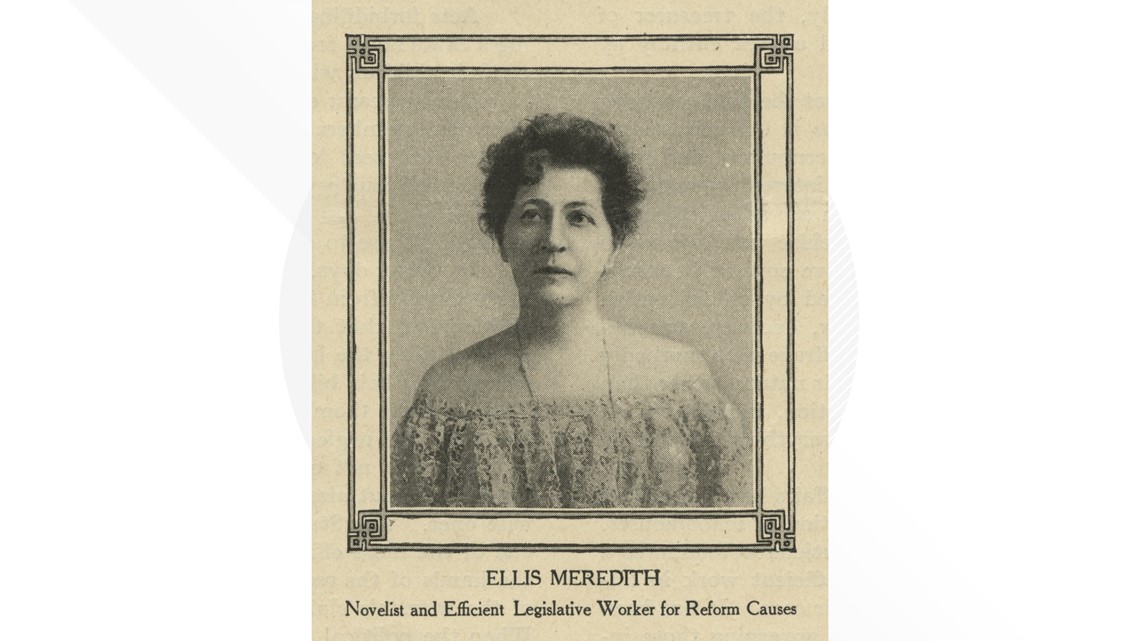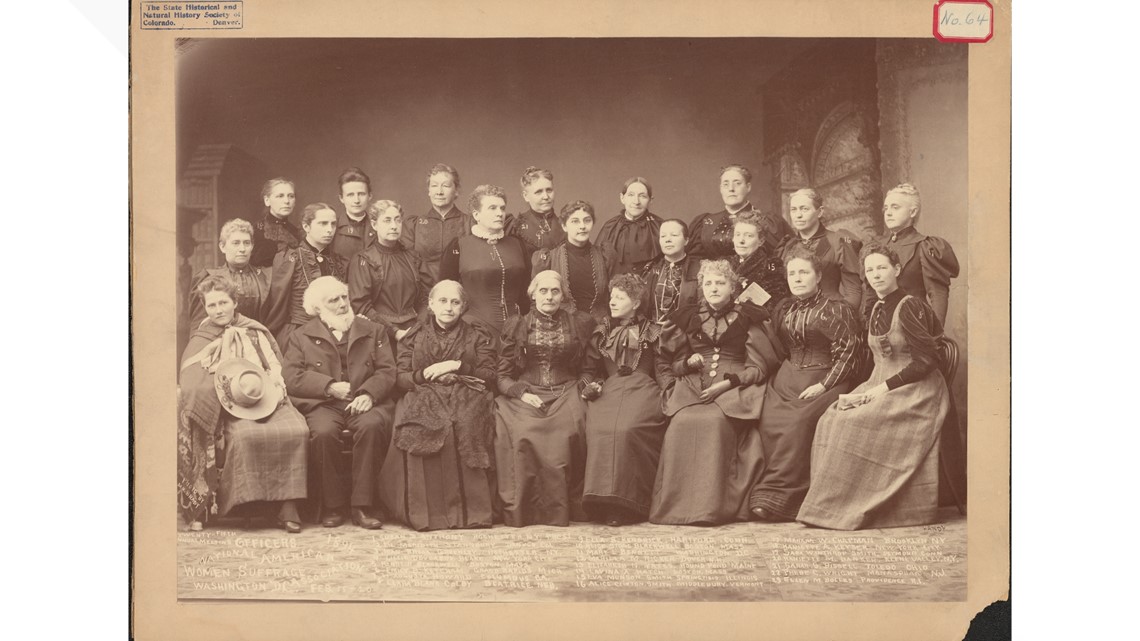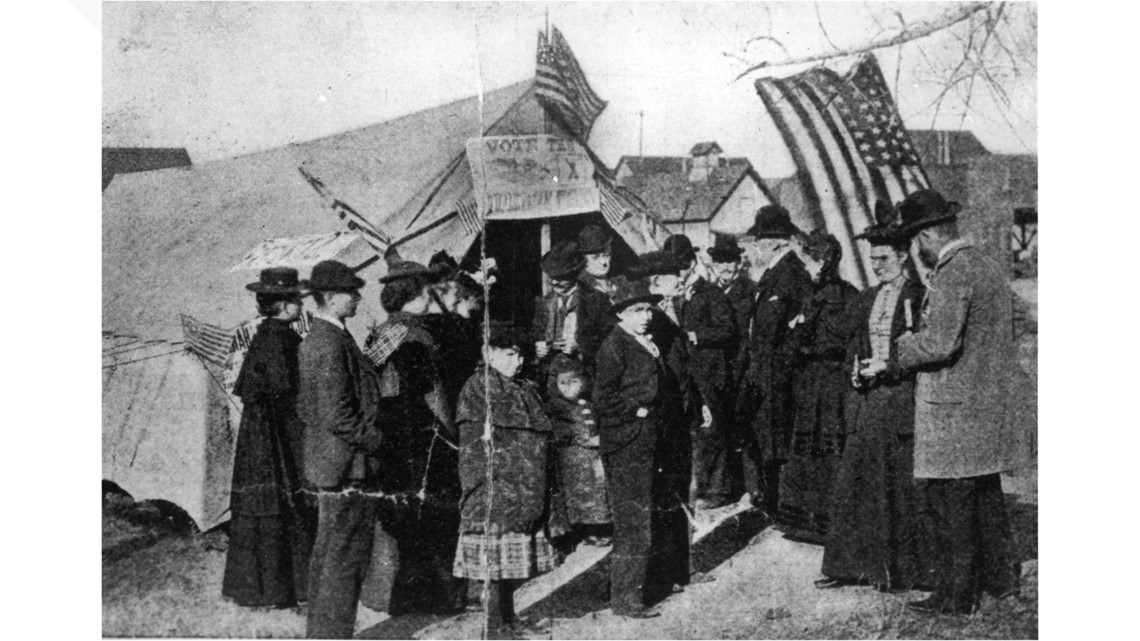DENVER — It's been more than a century since the 19th Amendment gave women the right to vote. In Colorado, women fought for and won that right nearly three decades earlier.
Still, the push to secure suffrage here wasn't simple for suffragettes.
“You know, there’s always a seedy underside to any great triumph of historical justice," said Dr. Shelby Balik, Professor of History at MSU Denver.
Sifting through the Denver Public Library Special Collections archives curated by Laura Ruttum Senturia, Balik looks through key pieces of Colorado’s record of women’s suffrage, including the Sarah Platt Decker Papers. There’s a lot to take in.
In 1877, Colorado women were ready to get the right to vote, but not everyone was on board.
"People were concerned that they would undermine their marriages, that instead of being submissive and cheerful wives, they would fight with their husbands about politics," Balik said. "There were many people who really did believe that women would be raped walking to the polls or that they would become more masculine and more aggressive."
Politicians and religious leaders spoke out against it, writing pamphlets. Priest Joseph Machebeuf even wrote a sermon about it.
“'Who will take care of the children,' he says. 'Who will take charge of those children,'" Balik said, reading the words from Machebeuf's sermon. “'How absurd and repugnant to the feeling of respect we all have for the gentle sex. To think of a woman leaving her household duties to go to the polls.'"
But women were ready to show they could multitask, both raising a family and hitting the polls.
First, they’d need to ask men for the right to vote. That’s where the suffragists came in. Women like Baby Doe Tabor, Ellis Meredith, Eliza Routt and Elizabeth Ensley were front and center.
Nationally, they got some help from ladies like Lucy Stone, Carrie Chapman Catt and Susan B. Anthony.




"So there were a lot of men who were very suspicious," Balik said of the first effort to secure suffrage, in 1877. "It went down by a 2:1 ratio. It wasn’t even close."
Not everyone took the failure well.
“Susan B. Anthony just left in disgust and could not believe what had just happened," Balik said. "It was so badly defeated that she just walked away."
The finger-pointing began.
“Susan B. Anthony and others blamed the Hispano men for the failure of the vote, but that really wasn’t the sole cause. They were generally opposed to women’s suffrage, but so were the saloon owners. So were people in mining towns who believed that women, once given the vote, would pass temperance laws," Balik said.


Sixteen years later, they tried again. Leaders like Elizabeth Ensley were ready to help.
“She was instrumental in leading the Black women’s suffrage movement in collaboration with the white women’s suffrage movement," Balik said.
The two groups collaborated, working together to convince men they deserved this right.
"I actually do wish people knew that at least for a moment, Black and white women’s suffragists were collaborating. I wish people knew the role that Black women’s suffragists played in Colorado," Balik said.
But many white suffragettes preyed on racist ideas to win over others.
"One of the arguments suffragists made was if you granted women’s suffrage, more white women would move to Colorado and they would bring kind of their sense of refinement," Balik said. "Really, it was so women could outweigh the immigrant vote.”
This time, the push for suffrage succeeded.
“Everything kind of came together for that 1893 campaign that hadn’t come together before. And it was just sort of a perfect storm in the very best way for Colorado women because you had demographic shifts that made the vote more likely to succeed," Balik said.
Colorado was the second state in the country to permit women the right to vote, second only to Wyoming.


But that didn't mean everyone was allowed to vote.
“Native women living on reservations did not have the right to vote until much later," Balik said. "It is still very difficult for Indigenous people living on reservations to vote."
But more than 130 years after getting the vote, Colorado women continue to turn out to elections, to serve in office, and take charge and lead – whether they’re leading from their hometown or in Congress.
SUGGESTED VIDEOS: Colorado’s Leading Ladies

